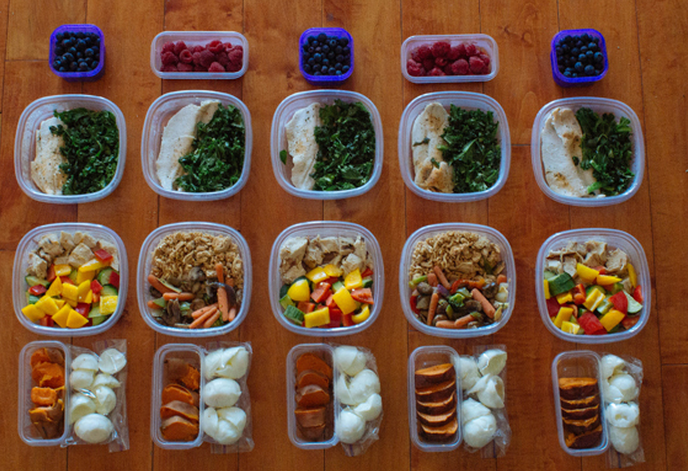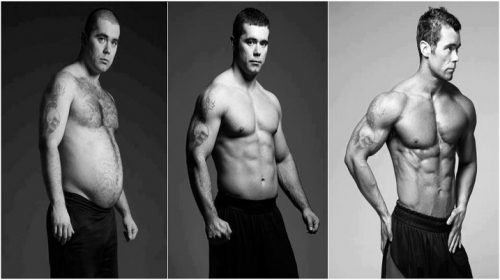No fluff, no junk. In this article, you’ll find 50 straight to the point tips and tricks to help you build lean muscle mass and burn body fat! Read more.

Humans are funny creatures. We like absolutes. Black or white, but make sure you leave out the gray.
Information presented in short, provocative sound bites is almost guaranteed to garner attention as it provides the reader with a pseudo sense of expertise. Top Tips and Tricks To Lose Fat And Build Muscle
Just enough data to be dangerous but not enough to actually understand the context of the topic.
Enter the list. Lists are simple but extremely effective. They’re ambiguous, yet dichotomous in nature.
In other words, they’re the perfect solution to our investigative nature without being overly concerned about specific details.
In that case, here’s 50 simple suggestions which provide a glimpse into my personal philosophy and the physiological processes which support it.

50 Quick Tips to Build Muscle & Burn Fat
1. Pain is your body’s way of trying to tell you something. NSAIDs are not the solution, learn to listen and respond appropriately.
2. If you’re having trouble adding muscle mass, you may consider your programming. But, odds are there is likely a nutrition, lifestyle, hormonal, or digestive issue (in that order).
3. Knowledge without application is useless. Reading articles and watching YouTube videos won’t turn you into a coach.
5. Unless you eat an exceptionally wide and varied diet, specific supplementation is probably a good idea. However, I’m not referring to pre-workouts, BCAAs, or test boosters.
6. “What gets monitored gets managed” – Unless you’ve been training for over a decade, it’s probably a good idea to write down your workouts. You may remember yesterday’s lift but how about your chest session from last month? My point exactly.
7. If your back hurts after conventional deadlifts, you may want to try a trap bar or sumo stance. Don’t be married to specific exercises, find the variation that works for you.
8. Speaking of deadlifts – if you’re going to chalk up, don’t pull a Lebron. No one wants to clean up a million pieces of chalk particulate.
9. Keto is trendy but if you’re an athlete this is probably the last thing you should consider if you value your performance on the field and in the gym.
10. If you’re dieting, don’t drink your calories. If you’re trying to gain mass, consider drinking most of your calories around your lift (refer to #28 if using shakes or smoothies).
11. External validation isn’t needed for progression. You can work out, not post it on social media, and believe it or not, you’ll still get stronger and look better naked (i.e. lose body fat and gain muscle).
12. If you find yourself unable to function or perform without caffeine, you need to take a deeper look at your lifestyle and change something. Fitness can only be expressed when you allow fatigue to mitigate.
13. No one (besides you) really cares about how much you lift. I promise.
14. Yes, your knees can and should go over your toes when you squat. This is the 21st century, it’s time for this myth to die.
15. IIFYM (if it fits your macros) works from an energy balance standpoint – aka you will lose weight even if you eat Doritos, Twinkies, and Captain Crunch. However, it’s an extremely poor choice if you care about your health and longevity even slightly.
16. Technique trumps all – if you move like trash, it will eventually catch up with you.
17. If you find the front of your shoulders sore and overworked after bench press, odds are you might need some soft tissue work on your pecs along with t-spine mobility and upper back strength (aka learn how to set your shoulder blades and keep them there).
18. Spinal flexion is not bad. Read that sentence again. In fact, if you really want to challenge your personal biases, consider experimenting with Jefferson barbell curls – sadly these don’t work your biceps but your spinal erectors will thank you.
19. The difference between surviving and thriving is adequate sleep.
20. If you’re looking to work in fitness, certifications are a starting point, not an end goal.
21. If you’re just getting into fitness, the 3 simplest steps you can take to get healthier are: Eat more protein and vegetables, go to bed by 10pm, and train with someone stronger than you.
22. Eating like an adult is hard. Do it anyways.
23. Mobility work is boring. Do it anyways.
24. Eating vegetables is boring (if you don’t know how to cook them). Do it anyways.
25. Despite what all the ads on YouTube and Facebook claim, you’re not going to get “shredded” in 8 weeks if you have 30lbs to lose.
26. Conditioning (i.e. cardio) won’t make you fat and AMPK won’t kill you. On the contrary, if you skip all cardiovascular work entirely, you’re likely doing yourself a disservice.
27. One of the simplest, most cost-effective habits you can utilize to improve sleep is to simply untuck your sheets which allows for better temperature regulation within your appendages.
28. If you’re going to ingest a protein shake or smoothie, include a chewable element (e.g. piece of fruit, chia seeds, shredded coconut, etc.) which will help stimulate the release of digestive enzymes and hydrochloric acid within the stomach.
29. Either learn how to use straps or mix your grip. But for the love of all things fitness, please don’t do both. Straps offset the need to use a mixed grip and a mixed grip offsets the need for straps. In other words, you’re offsetting the need to offset. No one likes double negatives…or people who mix their grip with straps. If you don’t know how to use straps, watch this.
30. 10 reps with the bar is not a viable warmup. Unless you’re being chased by a lion, it takes your central nervous system a few minutes to get acclimated to the ambient temperature, sound, sights, and smells. Move around, get loose, and pay attention to your body. There’s a reason you feel tight, don’t ignore it.
31. As you age, you begin to lose your reactive strength index (i.e. your reactive jump capacity), it’s vital that you maintain some plyometric elements (jumping rope, A-skips, broad/vertical jumps, etc.) within your training to maintain tendon elasticity under different movement velocities.
32. Remember this: “Your ability to function on little to no sleep is a testament to your body’s resiliency, not its performance capacity.” – Jeff Nichols
33. If your sleep was absolutely awful the night before a training session, you’d be better off taking a nap and focusing on recovery rather than forcing yourself to train at 50%. If you find yourself consistently resorting to naps instead of training, you need to rethink your nightly routine and sleep hygiene (see post #50 for further guidance).
34. To follow up on #14: when squatting, your body should resemble a lightning bolt – your tibia and torso should have relatively the same angle.
35. There is quite a bit of current debate between overtraining and under-recovery these days. I’m not going to refute either, but here are some simple signs you should keep an eye on as the training block progresses: mood, energy, rate of perceived exertion (RPE) during and after training, resting heart rate upon waking, grip strength, sleep, libido, and general mood/anxiety throughout the day.
36. Self-myofascial release (SMR)/foam rolling doesn’t “break up scar tissues and remove adhesions” like some may tell you. It inhibits the neural input to a muscle which is generating the hypertonic (constant contraction) state.
37. You can’t “biohack” your way out of sleep deprivation, I don’t care what Dave Asprey says.
38. Pre-workouts are a crutch, not a solution. Fix your sleep, fix your life.
39. Don’t buy a Fitbit, Apple watch, Oura ring, Garmin Vivofit, or any fitness tracking device unless you plan on doing something with the data. Tracking your step count, hours of nightly sleep, and heart rate is cool but essentially meaningless unless you change your lifestyle based upon the data.
40. Recovery is more important than training if you care about your general health and wellbeing. Fitness is meant to promote resilience and longevity, not fatigue and injury. Adjust accordingly.
41. If something hurts, don’t try to train through it, train around it. Injuries and pain are sometimes the best teachers but they are also costly and inconvenient. No gym PR is worth surgery and 3 months in a cast.
42. When it comes to fitness education and quality information, social media is a double-edged sword. Choose your mentors carefully and examine exuberant claims with skepticism.
43. Zero calorie beverages with added FAT soluble vitamins are worthless. Fat soluble vitamins (A,D,E,K) are only absorbed in the presence of fat (hence the name: “FAT soluble”) so putting them in a zero calorie beverage essentially renders them useless and is simply a marketing ploy to increase sales.
44. Protein and veggies are your friends; if you’re trying to lose weight and you’re still hungry after a meal, these should be your first option before additional carbs or fat.
45. Creatine and whey are a solid starting point for any athlete – high school, professional, or otherwise. Literally everyone benefits from both of those compounds.
46. Anyone who tells you that calorie balance is all that matters at the end of the day is sorely mistaken and misinformed. There’s a reason entire degrees are dedicated to nutritional science, it’s much more in-depth than simple macros and micros if you’re interested in preserving long-term health and vitality.
47. Strength training is literally weighted stretching. If something remains chronically “tight”, this is likely a positioning or strength issue. For example, if your hamstrings seem abnormally tight 24/7, you may want to consider a 6-8 week block with heavy emphasis on RDLs, glute bridges, rollouts, reverse crunches, and rear foot elevated split squats (RFESS). Beware, you’ll likely need a new wardrobe when the 8 weeks is over.
48. Muscle soreness is rarely an accurate indicator of strength progression or hypertrophy. In fact, if your goal is #livesore then you’re likely going to spend much of your time exhausted, stiff, and frustrated with your lack of progress.
49. You need to take responsibility for yourself and your health. No one else is going to provide all the answers so we need to stop looking to solitary sources for primary solutions.
50. I have yet to meet anyone who goes to bed at 10pm, sleeps wonderfully through the night, and consistently wakes up feeling well rested and rejuvenated.



Post your comment